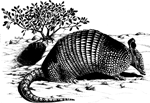Vertebrate Pest Conference Proceedings collection
Date of this Version
March 1980
Document Type
Article
Abstract
The status of our knowledge of the roles of various sylvatic rodents in plague ecology in California is reviewed. Two theories, Pavlovsky's doctrine of focality of zoonotic diseases and Baltazard's proposal that plague is maintained in nature in resistant rodent species, form the framework for our understanding of the occurrence and persistence of plague. The concepts of resistance, reservoir species, susceptibility, and recipient species are defined and discussed. The ecological attributes that appear to enhance the role of certain rodent species as reservoirs are proposed, and the ecological features that appear to produce epizootics are briefly outlined. Based on current information, the roles of individual species of rodents, rabbits, and some insectivores are presented and discussed in relation to epizootic potential and the epidemiology of human infection. Man's role in plague ecology leading to greater exposure to sylvatic plague is emphasized.

